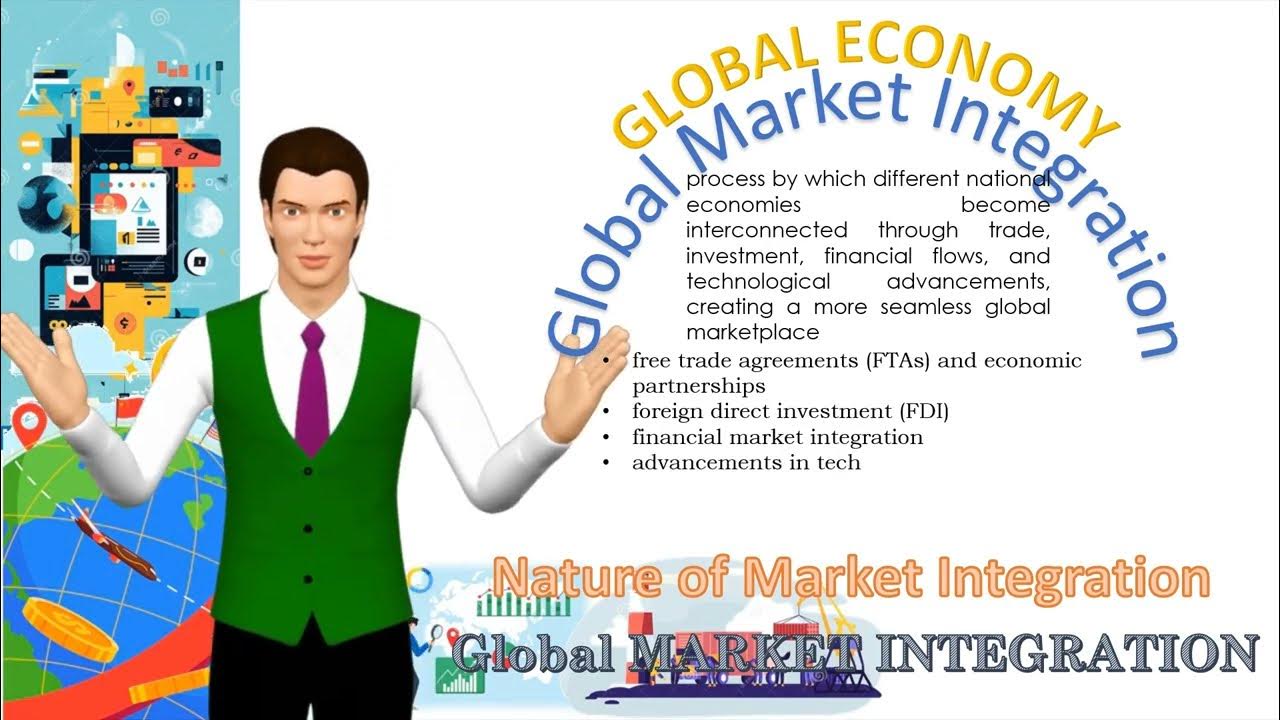Unleash the Potential of the Creative Economy: UNESCO
Summary
TLDRThis video highlights the vital role of the creative economy in shaping global development, providing sustainable jobs, and fostering inclusivity. It emphasizes that creativity is not only an expression of identity but also a powerful economic force, employing millions worldwide and generating billions in revenue. The video advocates for stronger support through international policies like the UNESCO 2005 Convention, aiming to ensure equitable digital access, freedom of artistic expression, and collaboration between developed and developing nations. Ultimately, it calls for collective action to unleash the full potential of the creative sector, benefiting marginalized populations and future generations.
Takeaways
- 😀 The creative economy is a significant driver of ideas, emotions, and connections, shaping our cultural identity.
- 😀 Creativity goes beyond self-expression; it provides livelihoods, careers, and economic opportunities globally.
- 😀 The creative economy employs over 30 million people worldwide, generating $2.25 billion in revenue.
- 😀 Unlike industries that rely on finite resources, creativity is an infinite, renewable resource.
- 😀 The creative economy plays a crucial role in achieving a sustainable future, with decent jobs and gender equality.
- 😀 Creative industries employ more young people than any other sector, making them essential for future generations.
- 😀 The creative economy is vital for marginalized populations, including women, indigenous peoples, and migrants, offering them opportunities.
- 😀 The 2005 Convention on the Protection and Promotion of the Diversity of Cultural Expressions seeks to unlock culture's potential for sustainable development.
- 😀 To thrive, the creative sector requires equitable digital access, artistic freedom, and strong civil society partnerships.
- 😀 Over 150 countries have signed the international agreement, committing to support the local creative economy through policies, training, and international cooperation.
Q & A
What is the role of creativity in driving economic opportunities?
-Creativity plays a crucial role in driving economic opportunities by providing jobs, supporting careers, and fostering economic growth through industries like music, visual arts, design, and performance. The creative economy generates billions in revenue and employs millions globally, making it an essential driver of economic prosperity.
How does the creative economy differ from industries dependent on finite resources?
-Unlike industries such as coal, timber, or oil that rely on finite materials, creativity is an infinite and renewable resource. This characteristic allows the creative economy to continuously evolve, offering sustainable growth without the depletion of natural resources.
What makes the creative economy a key player in achieving sustainable development?
-The creative economy is essential for sustainable development because it generates decent jobs, fosters gender equality, and empowers marginalized communities. By offering inclusive opportunities, it contributes to social and economic sustainability, supporting both local and global development goals.
How does the creative economy contribute to gender equality and youth employment?
-The creative economy employs more young people than any other sector, providing a pathway for youth to build careers. Additionally, it offers significant opportunities for women and other marginalized groups, helping to reduce gender inequality and create a more inclusive workforce.
What are some of the challenges that marginalized populations face in traditional job markets?
-Marginalized populations, including women, indigenous peoples, and migrants, often face barriers such as discrimination, lack of access to education, and limited job opportunities in traditional sectors. The creative economy, however, offers a more inclusive space where these groups can find meaningful employment and contribute to cultural and economic development.
What is the significance of the 2005 Convention on the Protection and Promotion of the Diversity of Cultural Expressions?
-The 2005 Convention is an international agreement aimed at unlocking the potential of culture to contribute to sustainable development. By supporting the diversity of cultural expressions, the convention encourages global cooperation, equitable access to culture, and the protection of artistic freedom, ensuring that creative industries thrive worldwide.
How does the creative economy contribute to the flow of cultural goods between developed and developing countries?
-The creative economy promotes a balanced flow of cultural goods between developed and developing countries, ensuring that both regions have equal access to global cultural products and opportunities. This exchange enriches cultural diversity and supports the growth of local creative industries worldwide.
Why is digital access important for the growth of the creative economy?
-Equitable digital access is crucial for the growth of the creative economy because it enables wider participation in creative industries, providing artists and creators from all backgrounds with the tools and platforms they need to share their work and reach global audiences. Digital transformation fosters innovation and broadens opportunities for creators in underserved regions.
What role does artistic freedom play in the success of the creative economy?
-Artistic freedom is essential for the creative economy because it allows artists to explore and express ideas without censorship or restriction. This freedom is key to fostering innovation, cultural exchange, and the diversity of artistic expressions that drive the growth of creative industries.
How can international cooperation help strengthen the creative economy?
-International cooperation plays a pivotal role in strengthening the creative economy by enabling countries to share knowledge, resources, and best practices. Collaborative efforts support the development of policies, training programs, and cultural exchanges that empower creative industries and ensure their sustainable growth across borders.
Outlines

このセクションは有料ユーザー限定です。 アクセスするには、アップグレードをお願いします。
今すぐアップグレードMindmap

このセクションは有料ユーザー限定です。 アクセスするには、アップグレードをお願いします。
今すぐアップグレードKeywords

このセクションは有料ユーザー限定です。 アクセスするには、アップグレードをお願いします。
今すぐアップグレードHighlights

このセクションは有料ユーザー限定です。 アクセスするには、アップグレードをお願いします。
今すぐアップグレードTranscripts

このセクションは有料ユーザー限定です。 アクセスするには、アップグレードをお願いします。
今すぐアップグレード5.0 / 5 (0 votes)






